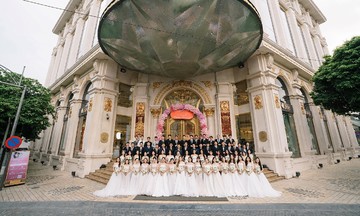"She didn't answer but stared, which made me confused and feel like my body froze for a few seconds," Kaur said.
The cafe was crowded, with only two employees working. After a few seconds of silence, the barista nodded and turned to prepare the drink without saying a word.
Kaur later shared this situation on her YouTube channel, which has over 3.2 million subscribers. She received thousands of responses indicating that the situation wasn't uncommon.
In New York, 29-year-old Sarah asked a young employee at a fast-food restaurant about the wait time for a burger, but only received a prolonged stare. The employee silently nodded and turned away, leaving Sarah bewildered and wondering what she had done wrong.
40-year-old James, a store manager in London, instructed a new Gen Z employee on how to arrange merchandise, but only received a blank stare, no response, and no questions. A few seconds later, the employee quietly returned to work, leaving James wondering if he had communicated incorrectly.
"Gen Z stare" is a term that has gone viral and sparked much discussion on social media. The term describes the expressionless, silent, and unresponsive face of young people in the workplace.
This phenomenon has two forms: the stare from employees towards customers when faced with what they perceive as unreasonable requests, and the stare from customers silently directed at service staff. This trend originated on TikTok, gaining over 3 million likes on the original video and being mentioned over 70,000 times across platforms from early July to early August.
Jennifer Grygiel, a social media expert at Syracuse University (USA), believes the Gen Z stare reflects generational differences. It's a blank expression, with wide eyes and minimal smiling, often seen in young people. Instead of answering, they often remain silent for a few seconds, sometimes appearing awkward, responding only with a stare.
"This isn't necessarily rudeness, but could be their way of protecting their emotions," Grygiel said.
Some studies suggest that a neutral facial expression can act as a form of emotional regulation. Sociologist Akriti Verma at Cornell University (USA) analyzed communication data on social media and found that maintaining a flat facial expression helps individuals limit emotional exposure.
At the same time, Gen Z is also a generation lacking in some skills. A Harris Poll (USA) survey indicated that 65% of Gen Z had to relearn social skills after the pandemic. A 2022 Pew Research Center report noted that 48% of teenagers believe social media negatively impacts their mental health.
 |
Illustration: BI |
However, in the workplace, especially in customer service, this stare can be perceived as unprofessional or rude, increasing tension between Gen Z and other generations.
Many managers are concerned about Gen Z's perceived weaker communication skills, leading 47% of them to hesitate when hiring young people, impacting employment opportunities. Additionally, about 51% of Gen Z admit their social skills have declined, making it difficult to build workplace relationships and hindering career development.
Professor Megan Gerhardt at the University of Miami, co-founder of the research organization Gentelligence, suggests that managers should approach the Gen Z stare with understanding rather than criticism.
She recommends creating an environment that encourages open communication, organizing meetings where young employees feel comfortable asking questions, and providing training in direct communication skills such as how to respond to customers or colleagues.
According to Gerhardt, this helps Gen Z feel more confident, reduces pressure from the digital environment, and limits social anxiety after the pandemic. "This blank stare is a way they protect their emotions," she said. "With patient guidance and trust-building, Gen Z will integrate better and bridge the generational gap."
Ngoc Ngan (According to Psychologytoday, BI)












